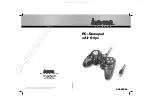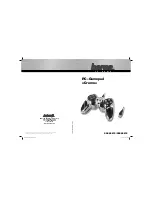
To avoid problems during installation and ongoing operation, follow these general precautions when you plan
the equipment locations and connections:
• Use the
show environment all
and the
show facility-alarm status
commands regularly to check the
internal system status. The environmental monitor continually checks the interior chassis environment;
it provides warnings for high temperature and creates reports on any occurrences. If warning messages
are displayed, take immediate action to identify the cause and correct the problem. For more information
on these commands, see the
Environmental Monitoring and Reporting Functions
section.
• Keep the Cisco Catalyst 9800-80 Wireless Controller off the floor and out of the areas that collect dust.
• Follow ESD-prevention procedures to avoid damage to equipment. Damage from static discharge can
cause immediate or intermittent equipment failure.
Locating for Proper Airflow
Ensure that the location of the Cisco Catalyst 9800-80 Wireless Controller has enough airflow to keep the
system operating within the environmental characteristics, and the air temperature is sufficient to compensate
for the heat dissipated by the system.
Avoid locating the Cisco Catalyst 9800-80 Wireless Controller in a location in which the chassis air intake
vents could draw in the exhaust air from adjacent equipment. Consider how the air flows through the controller.
The airflow direction is front to back with ambient air drawn in from the venting located on the chassis’ front
sides.
Preventing Electrostatic Discharge Damage
Electrostatic discharge (ESD) damage occurs when electronic cards or components are improperly handled
resulting in complete or intermittent failures. Static electricity can harm delicate components inside your
system. To prevent static damage, discharge static electricity from your body before you touch any of your
system components, such as a microprocessor. As you continue to work on your system, periodically touch
an unpainted metal surface on the computer chassis.
The following are guidelines for preventing ESD damage:
• Always use an ESD-preventive wrist or ankle strap and ensure that it makes good skin contact. Before
removing a card from the chassis, connect the equipment end of the strap to the ESD plug at the bottom
of the chassis below the power entry modules.
• Handle line cards by faceplates and carrier edges only; avoid touching the card components or connector
pins.
• When removing a module, place the removed module component-side-up on an antistatic surface or in
a static-shielding bag. If the module is to be returned to the factory, immediately place it in a
static-shielding bag.
• Avoid contact between the modules and clothing. The wrist strap protects the card from ESD voltages
only on the body; ESD voltages on clothing can still cause damage.
• When transporting a sensitive component, place it in an antistatic container or packaging.
• Handle all sensitive components in a static-safe area. If possible, use antistatic floor pads and workbench
pads.
Cisco Catalyst 9800-80 Wireless Controller Hardware Installation Guide
32
Preparing Your Site for Installation
Preventing Electrostatic Discharge Damage
















































